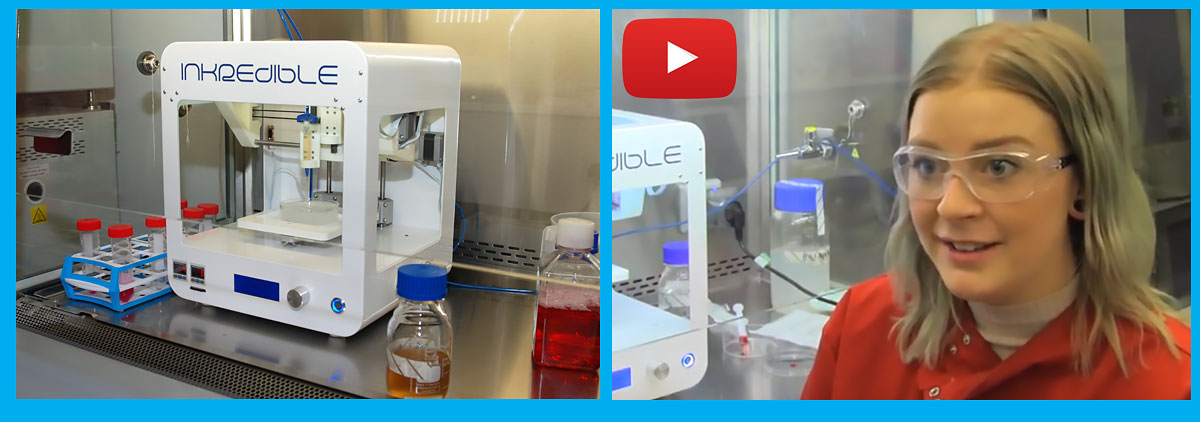Scientists discover that fluid gel can overcome the problems of bioprinters replicating softer human tissues
THE use of 3D bioprinters to produce replacement human tissue is one of the most exciting developments in medical science. Now, researchers at the University of Huddersfield have made a breakthrough that could expand the scope and use of the technology.
There is potential for clinics to carry out MRI scans on a patient and feed the data to a 3D printer that produces a synthetic replica of the tissue that is defective. It could take the form of a “plug” to be implanted into a damaged joint.
However, human tissue is often a combination of stiff and soft material combined – such as bone and cartilage – and there have been problems in using bioprinters to replicate the softer layers because the polymers used have an exceptionally low viscosity when they are in a liquid state.
“With very low viscosity materials, when you lay down the first layer, it collapses under its own weight and doesn’t retain its shape. When you put the next layer on it won’t integrate,” said Dr Alan Smith, who is Reader in Biopolymer Materials at the University of Huddersfield.
Now, he and his fellow researchers – including his former PhD student Dr Samuel Moxon and colleagues at the University of Birmingham – have developed a method of using gel particles as a suspending media.
“It lets you print in 3D with these very low viscosity materials and they don’t collapse, which allows you to build a shape,” said Dr Smith. After the part has solidified, the gel can be washed away.
The University of Huddersfield’s School of Applied Sciences has acquired a state-of-the-art 3D bioprinter, aiding the research project in which Dr Smith’s concept of suspending low viscosity polymers in a fluid gel is a central component.
The development has been described in an article titled Suspended Manufacture of Biological Structures that has appeared in Advanced Materials. A further progress report is to be published by the same journal.
The initial article states that the new manufacturing process allows for the use of a wide range of polymeric materials, including many already approved by regulatory bodies.
“Ultimately, it has the potential to produce structures that could make their way into clinical trial in the relative short term,” write Dr Smith and his co-authors, who include Dr Moxon and Professor Liam Grover of the University of Birmingham.
The article describes in detail the creation of tissue “scaffolds” that could be used in the production of osteochondrial plugs to repair cartilage defects.
The research continues, and PhD student Jessica Senior is now working with Dr Smith on applying the suspended manufacture process to a 3D bioprinter and how different types of cell material can be integrated. Other areas of investigation include the integration of stem cells into the system.
More News
Tungsten not the answer for nuclear fusion reactor
“Though tungsten is a leading candidate, we don’t see how we can use it as a structural material”
Secret behind the perfect pint – a mathematician
Professor William Lee shows how the science of maths can aid the profits of industry
Entomologist confirms Saharan farmers in 8,000 BC
Dr Stefano Vanin was part of the team working on discoveries at Libya’s Holocene age hunter-gatherer site at Takarkori

